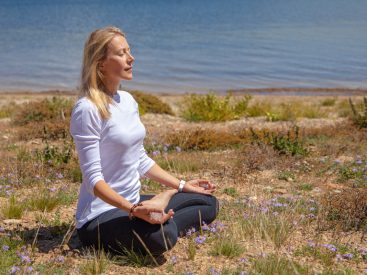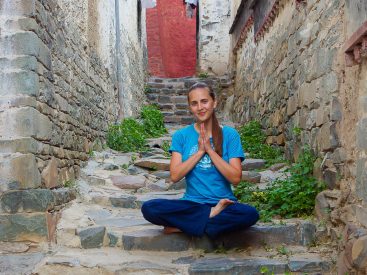V An article from The New York Times explores how meditation can actually help people stay more active during the winter months. Indeed, at this time, people’s activity decreases and the opportunities to practice regularly decrease with it. The article reports on a 2019 study published in the journal Medicine & Science in Sports & Exercise in which experts from the University of Wisconsin-Madison and Iowa State University examined different ways to inspire people to continue exercising during the winter months.
The study involved 49 healthy but inactive men and women who had never exercised or tracked their activity throughout the week. Having received their baseline level of activity, they were randomly divided into one of three groups:
- an “exercise” group tasked with walking for at least 20 minutes a day and meeting for one group workout per week;
- a “meditation” group that attended weekly group meditation sessions and practiced mindfulness walking and sitting meditation at home;
- a control group instructed to continue with normal life.
The program lasted for two months – September and October. After the expiration date, all participants continued to track their activity for one week.
According to observers, men and women in the control group were much less active in late fall than they were in summer. On average, almost 18 minutes a day of any physical activity.
But the men and women in the other two groups were not so inactive, although they were no longer asked to exercise or meditate. They moved a little less than in the summer, but only for six minutes a day. In addition, the participants in the “meditation” group were more active than the participants in the “exercise” group.
Health Benefits of Meditation:
- Improves the quality of sleep;
- Reduces stress;
- Controls the level of anxiety;
- Increases concentration;
- Helps control pain.
How to practice walking meditation
Walking meditation is an easy way to incorporate meditation into your practice. This can be done anywhere, with or without shoes, outdoors or at home.
However, unlike traditional sitting meditation, walking meditation is done with your eyes open. So:
1. Find a safe place that allows you to walk back and forth at least 15 steps or in a large circle.
2. Concentrate on the sensations and quality of your breathing. Smooth deep breaths followed by smooth deep exhales.
3. Direct your attention to your feet as you step:
- Be careful when lifting your leg.
- Feel the movement of your back leg as you begin to move forward.
- Feel your foot connecting to the floor / ground / asphalt.
- Watch your body weight move from your back to your front leg.
4. Speed is not important during walking meditation, but it should be natural for you.
5. Your hands should also feel natural. Fold your hands into the mudra of your choice, or let them hang next to you.
If you are a jogger, you can also use these guidelines in your runs. Many runners find that it helps them to better control their breathing and therefore helps them run longer.
Whether you exercise regularly or are just starting out, incorporating meditation into your wellness program can bring health benefits throughout the year.
Try this wonderful practice and stay active and active despite the weather and other external circumstances!
Source: yogauonline.com/yoga-research/mindful-walking-how-meditation-can-help-you-stay-active-during-winter-months




